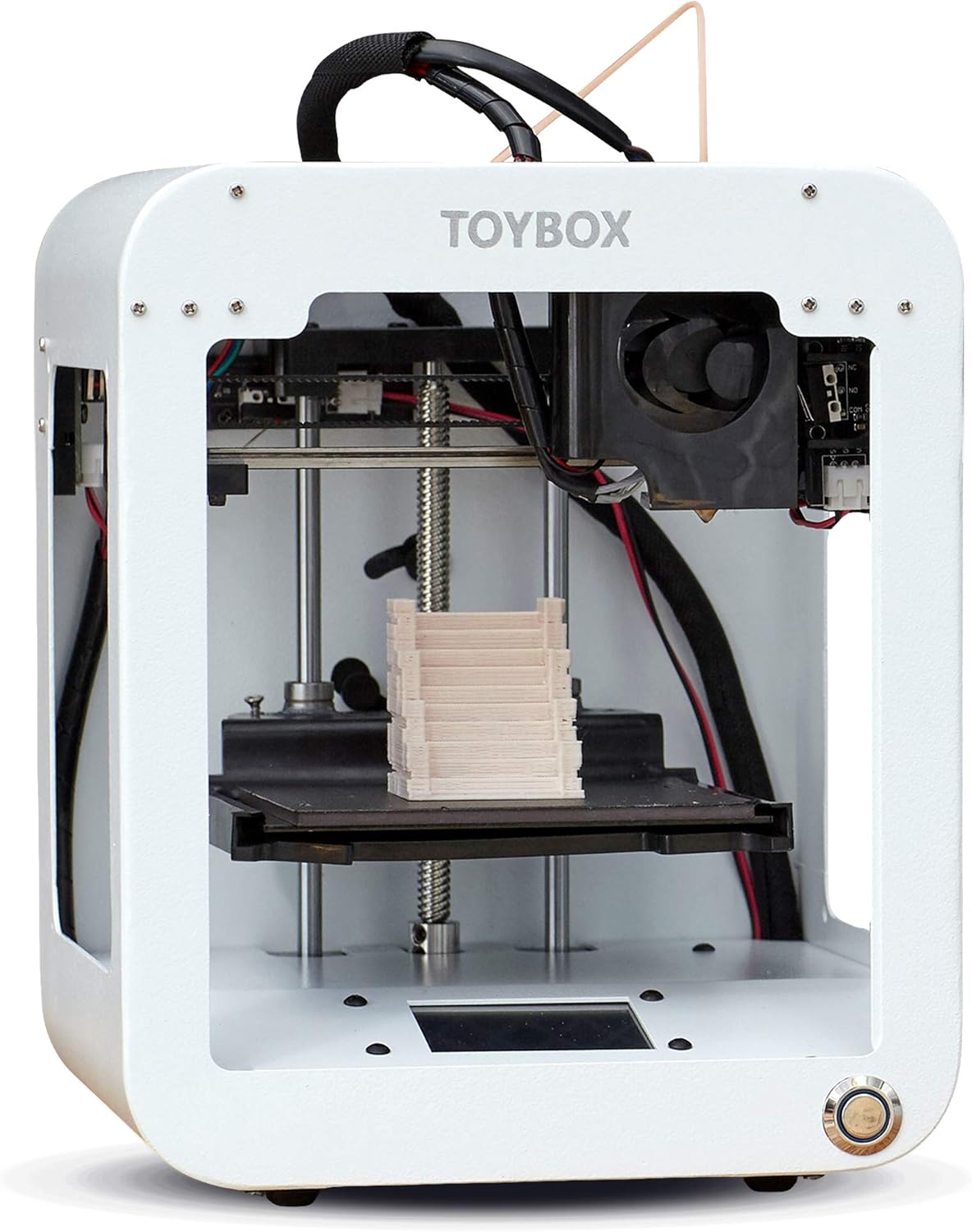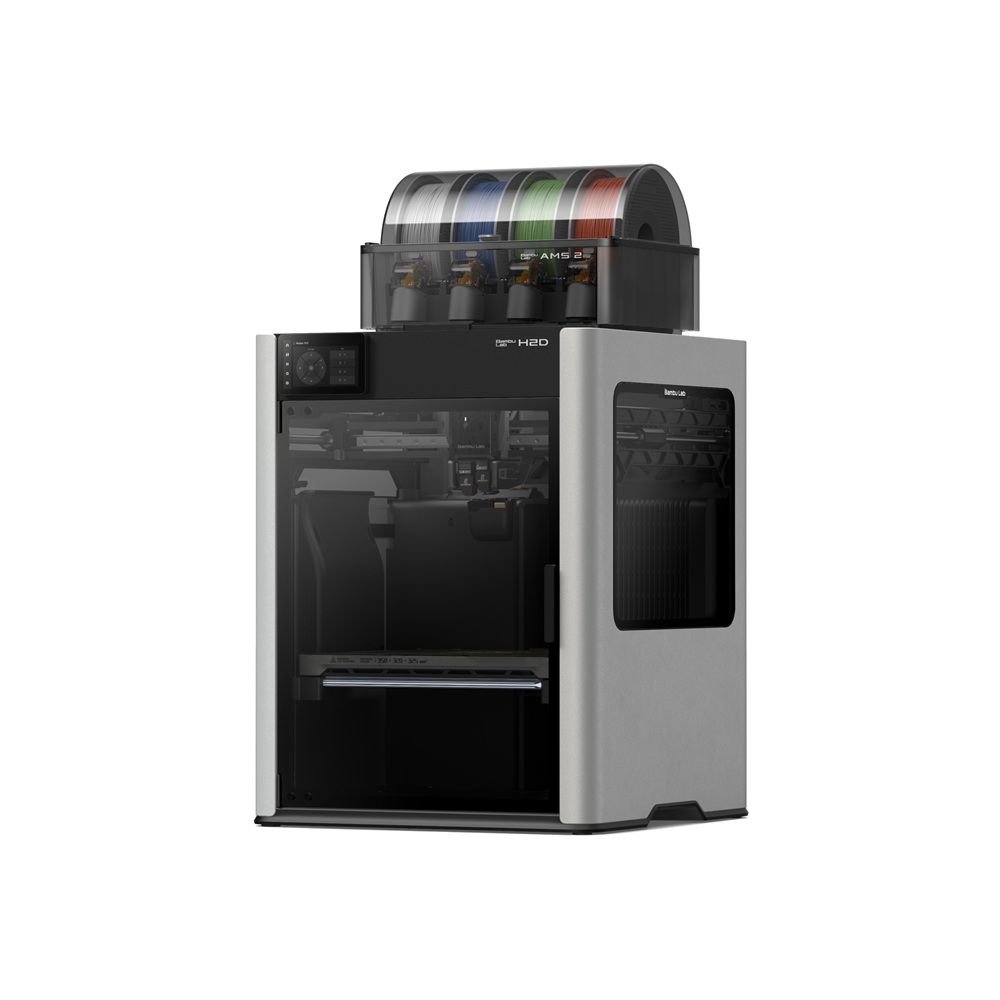Compare Toybox vs H2D
Comparison between the best 3D printers
Choose the best 3D printer at the best price. The cheapest 3D printers are here.
Buy a 3D printer here with 3D Fila.
 |
 |
|
| Model | Toybox[BUY Toybox] |
H2D |
| Printing Material | Filament | Filament |
| Buy Filament for Toybox Toybox | Buy Filament forBambu Lab H2D | |
| Estimated price | $299,00 | $1899,00 |
| Manufacturer | Toybox | Bambu Lab |
| Release Year | 2024 | 2025 |
| Print Volume [mm] | 70x80x90 | 350x320x325 |
| Printer Size [mm] | 190x190x230 | 492x514x626 |
| Weight [kg] | 3 | 42,3 |
| Power Loss Recovery | NO | YES |
| Enclosed printer | NO | YES |
| Bed Leveling | Manual | Automatic |
| Filament End Sensor | NO | YES |
| Bed type | Heated | |
| Power supply system | Direct Drive | Direct Drive |
| Standard nozzle | 0,5 | 0,4 |
| Maximum Nozzle Temperature [°C] | 210 | 350 |
| Maximum Bed Temperature [°C] | 120 | |
| Maximum printing speed [mm/s] | 60 | 600 |
| Filament holder | YES | YES |
| Camera for supervision | NO | NO |
| Recommended filaments | PLA | PLA, PETG, ABS, ASA, TPU, PVA, Nylon (PA) |
| Recommended slicers | Toybox | Bambu Studio |
| Maximum Resolution [mm] | 0,2 | 0,01 |
| Processor | ||
| Display | Touchscreen 2,4'' | Touchscreen 5'' |
| Power Supply | ||
| Connectivity | Wi-fi | Wifi, Bambu bus, Cartão SD |
| Operating systems | iOS, Android | Windows, Mac, Linux |
| Date of registration in the system | 2024-08-06 | 2025-03-31 |
| Release date | 2024 | 2025 |
| Extra features | The Toybox 3D printer is an excellent option for children and beginners. Easy to use, with intuitive setup and simplified operation via an app. The Toybox allows you to print thousands of toys and projects through a user-friendly interface. It has a removable magnetic table that makes it easy to remove printed objects. The filament is PLA, safe for children, and the printing is reliable and error-free. It also offers custom design options, allowing you to create and print drawings and photos. | Bambu Labs H2D combines high-speed 3D printing with a chamber heated up to 65 °C, dual extrusion with automatic nozzle switching, an AMS for filament drying and exchange, and AI sensors that detect failures. It offers optional laser and digital cutting capabilities, features intelligent calibration through computer vision, vibration control, enhanced fire safety, and real-time camera monitoring. |
| Support for multiple colors and materials (AMS and CFS) | NO | YES |
Notes * |
||
| Cost-benefit | 6 / 10 | 7 / 10 |
| Hardware | 0.9 / 10 | 8 / 10 |
| Tela | . | . |
| Print volume | 3 / 10 | 4 / 10 |
| Performance | 0 / 10 | 5 / 10 |
| [BUY Toybox] |
Conclusion |
| In conclusion, the choice between the Toybox and the Bambu Lab H2D 3D printers ultimately depends on the intended use and the user's experience level. The Toybox, priced significantly lower, is ideal for beginners and children, emphasizing ease of use, safety, and fun. Its compact print volume and PLA filament compatibility make it suitable for simple projects, toys, and creative designs within a user-friendly app interface. On the other hand, the Bambu Lab H2D, though considerably more expensive, is equipped with advanced features designed for serious hobbyists and professionals. It offers larger print volumes, higher printing speeds, and the capability to handle a wide range of materials through its automatic systems and intelligent calibration features. Its robust build and high-end functionalities justify the price for users needing versatility and efficiency. Ultimately, for casual users seeking an affordable entry point into 3D printing, the Toybox presents a compelling option. In contrast, those with more experience or demanding requirements would likely find the investment in the Bambu Lab H2D worthwhile, as it delivers superior performance and a broader scope of capabilities. |

